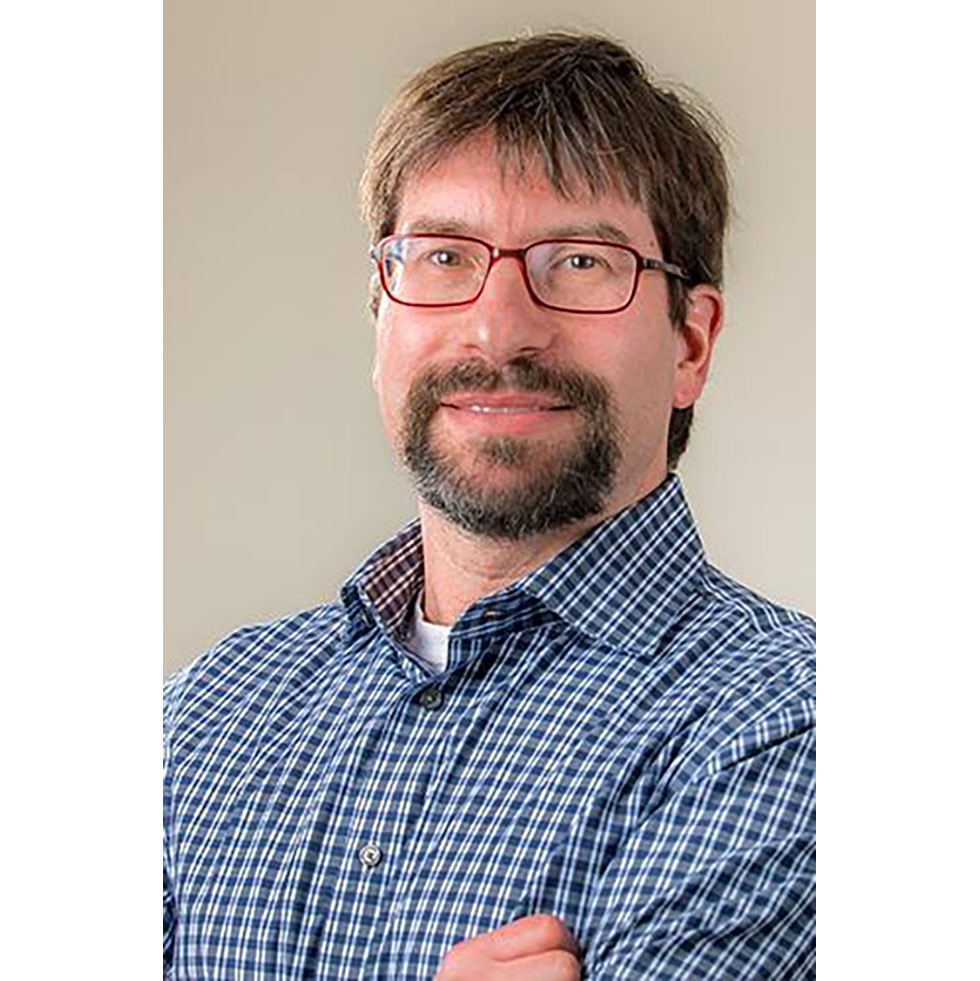
It is with great sadness that we announce the passing of our colleague, collaborator and friend, Alexander S. Brodsky, PhD. Alex was an Associate Professor in the Department of Pathology and Laboratory Medicine, and had been a valued faculty member of the Legorreta Cancer Center.
Alex began his scientific career in RNA biology. He completed undergraduate studies at the University of Pennsylvania before moving to MIT for graduate work, where his PhD focused on solving RNA structures by NMR. Alex expanded the scope of his expertise to the field of genomics during his postdoctoral training at the Dana Farber Cancer Institute. There he elucidated fundamental mechanisms of RNA export from the nucleus to the cytoplasm, leveraging early genomic technologies to produce a body of published work funded by Ruth L. Kirschstein and NIH fellowship awards.
Alex joined the Brown faculty in 2005, first in the Department of Molecular Biology, Cell Biology and Biochemistry and later the Department of Pathology and Laboratory Medicine at Rhode Island Hospital. He was a longtime affiliate of the Center for Computational Molecular Biology and the Brown Center for Genomics and Proteomics. As a lab head Alex was generous with his time, and thrived in his role of mentor to his students, technicians and postdoctoral trainees.
As an investigator at Brown, Alex's interests pivoted to cancer research, in particular using computational approaches to understand the remodeling of extracellular matrix composition that supports tumor growth. It is a tragic irony that Alex would contract the aggressive brain cancer glioblastoma, a topic he pursued with collaborators at the Legorreta Cancer Center. In the wake of his passing, we are reminded of the need for effective treatments for glioblastoma which Alex sought to advance. We are inspired with renewed determination to make a positive impact to the outcomes of patients so profoundly burdened by this disease.
Over the last two years Alex and his devoted wife Adina made the most of their time together, traveling with family between treatments and packing in every moment of happiness in the days remaining. Alex was fully engaged in science to the end, marked by spirited reviews of new data and several recent publications. While his loss leaves an undeniable void, Alex also leaves a living legacy of curiosity in the minds of his many students, colleagues and friends.
Paul Bertone, PhD, Associate Professor of Medicine
Sean Lawler, PhD, Associate Professor of Pathology and Laboratory Medicine
I first met Alex Brodsky almost 20 years ago for a get-to-know-each-other in the backyard of his home in Cambridgeport south of central square near memorial drive. Searching through my memory I am sometimes let down by my failure to recall important things while remembering weird little details of the same event. We met with our families. I think I brought my kids. For some reason I remember giant perfectly rendered cubes of yellow and orange cheese on a plate that I imagine were transferred fresh out the Bread and Circus/Whole Foods cling wrap moments before we arrived. I believe there was a dog running around. Finally, and most importantly, I remember my strong first impression of Alex as a confident, ambitious scientist. Intense and focused, he had just finished his postdoc with Pam Silver at the Dana Farber and was ready to conquer the world. Both he and I came from a background in chemistry but he pursued this at MIT with a PhD in an NMR lab which I found impressive. He talked about how to implement his experiments with formaldehyde crosslinking and immunoprecipitation on thousands of genes at a time. It was an exciting time to work in biology. The sequence of the human genome had been published. Cambridge was an exciting place. What seemed impossible last week was happening just down the street in Kendall square or Longwood.
We both were recruited to Brown to the MCB department by John Sedivy in 2005 and moved into adjoining labs on the fourth floor of 70 Ship street. Thinking about the direction and a good setup for our new labs, we strategized on buying equipment together. Alex had ambitious plans for large scale science keeping step with the genomic revolution that was happening just north of us in Boston. He was a determined scientist and mentor, often working one-on-one with his first graduate student Michael Bronson. I remember his struggles with the problematic technology of tiling arrays, troubleshooting technical problems that stood in the way of discovery. Ultimately sequencing took over as the preferred tool and continuing the work on arrays seemed more and more like throwing good money after bad. These are the inevitable frustrations of the ambitious. However, Alex’s persistence got him back to the business of discovery. He published more than 50 papers in the field of cancer biology. Alex left a big impression on his students through his mentorship and lectures in Advanced Biochemistry. Alex collaborated with numerous scientists to solve scientific problems. Throughout his career, he was a prolific scholar delivering many talks at scientific meetings and conferences.
I don’t know anybody who had a deeper knowledge of scientific literature in the field of genomics. He was an expert in genomics and I was not alone in asking him how the latest ‘seq’ technology worked. He worked collaboratively with others in MCB providing invaluable technical assistance to other research groups. Away from work, I remember talking about our love for soccer and sharing funny family stories. There were ups and downs in his life but throughout he was a devoted father and a scholar. Both of us moved from our labs in the old Ship street building and we saw less and less of each other. I will miss the impromptu coffees, lunches and kvetch sessions we shared over those 9 years we worked together.